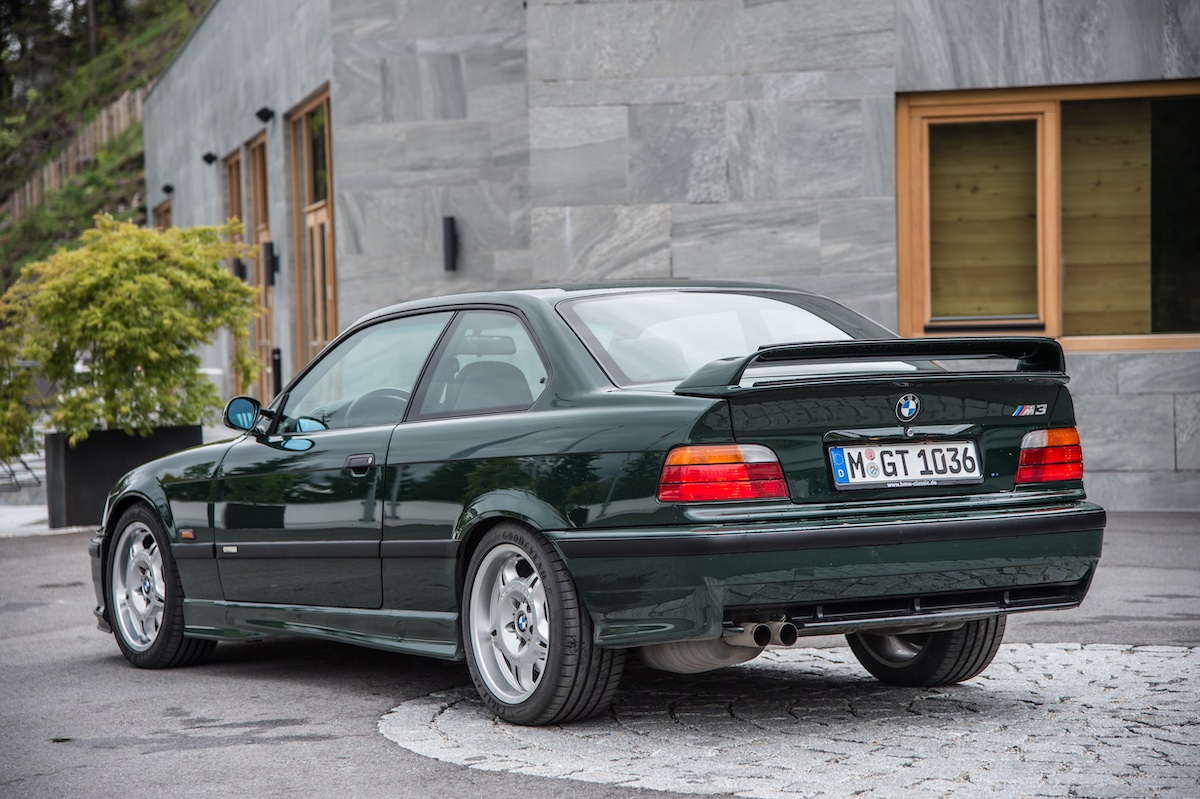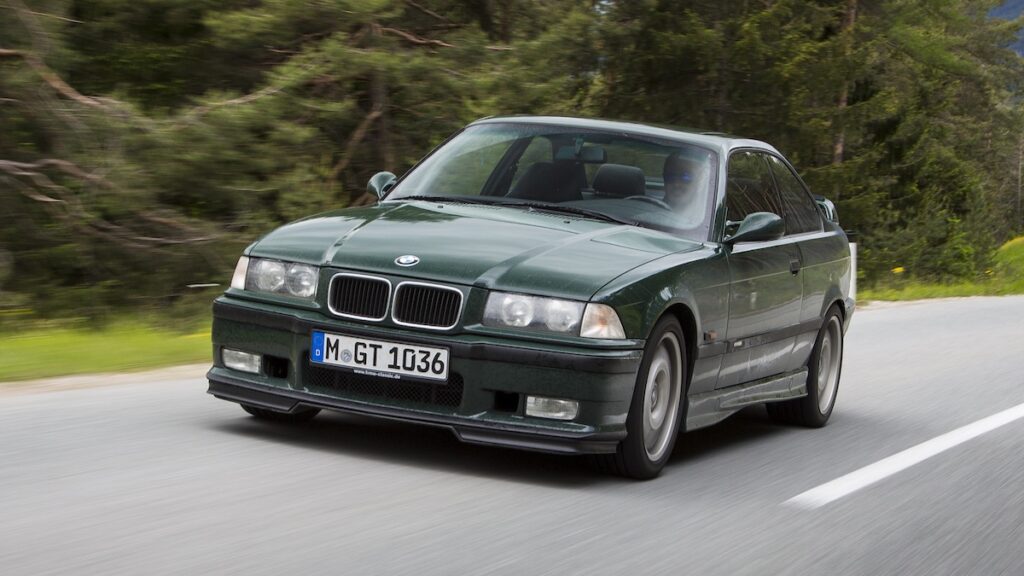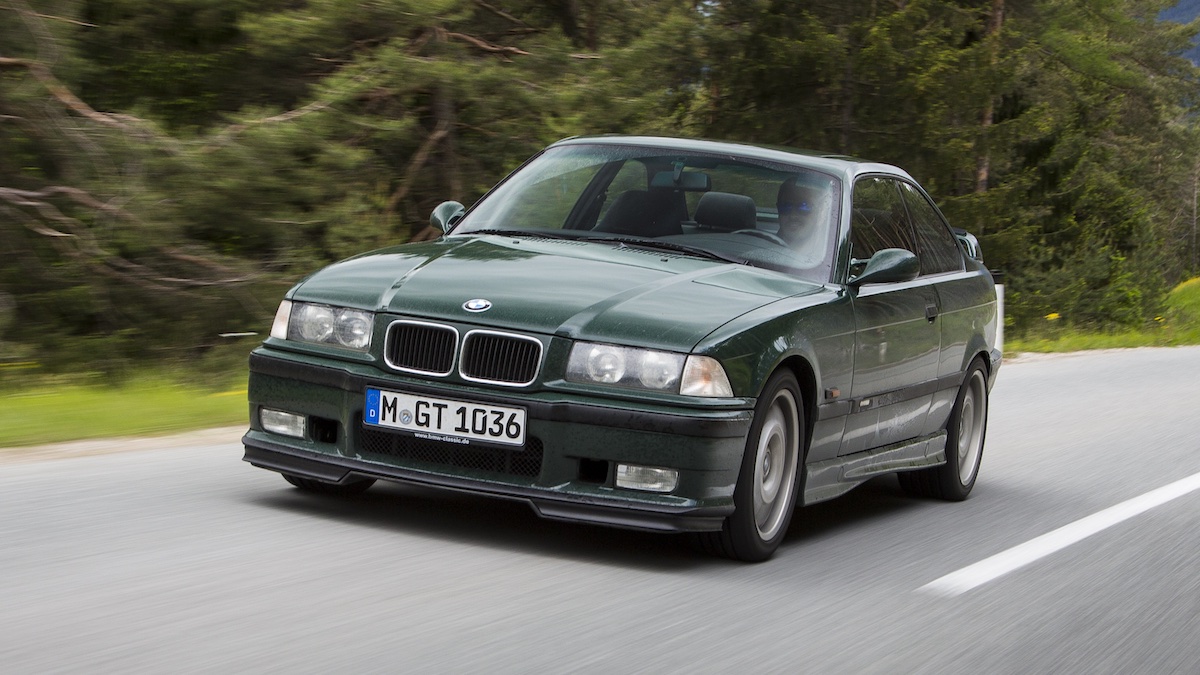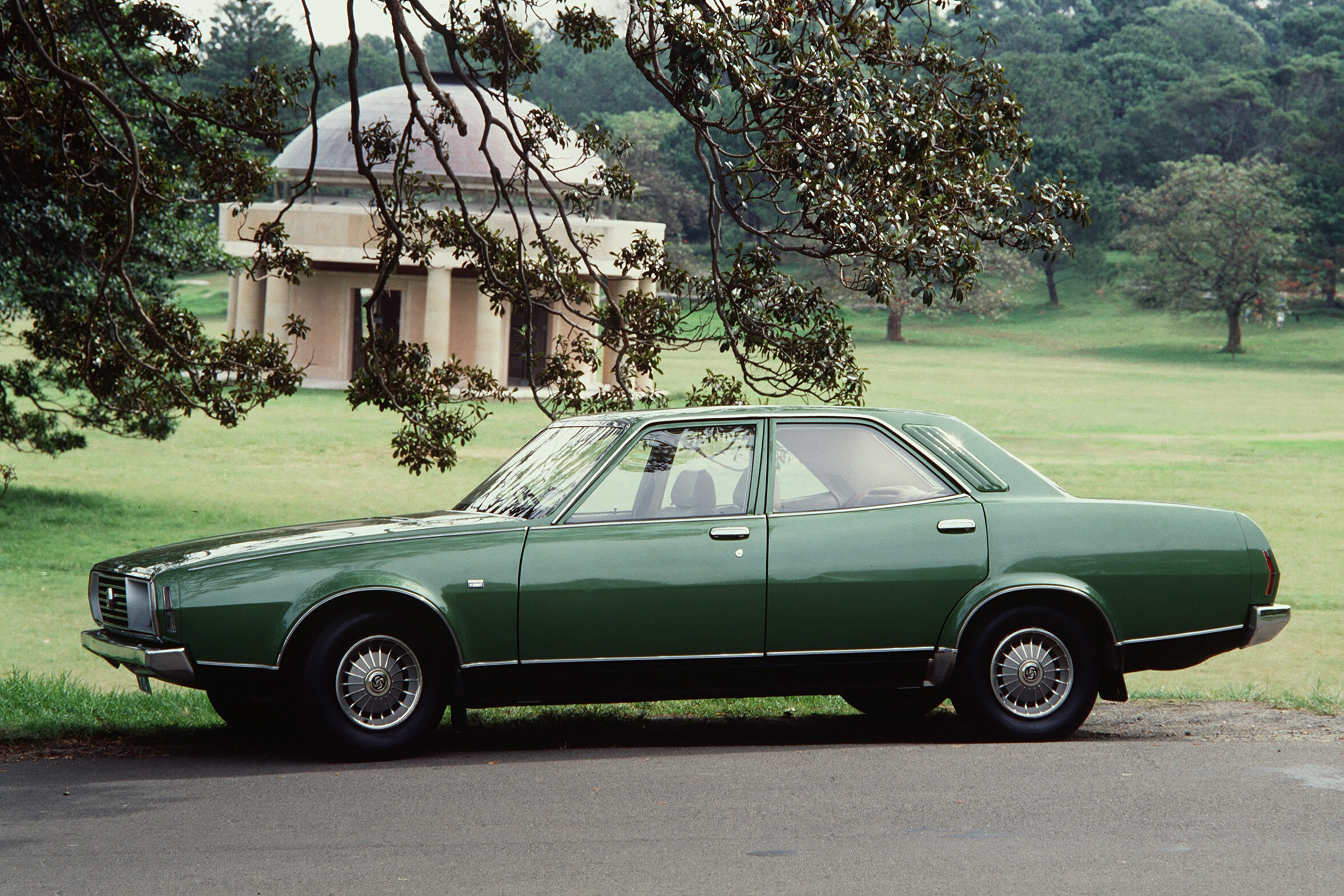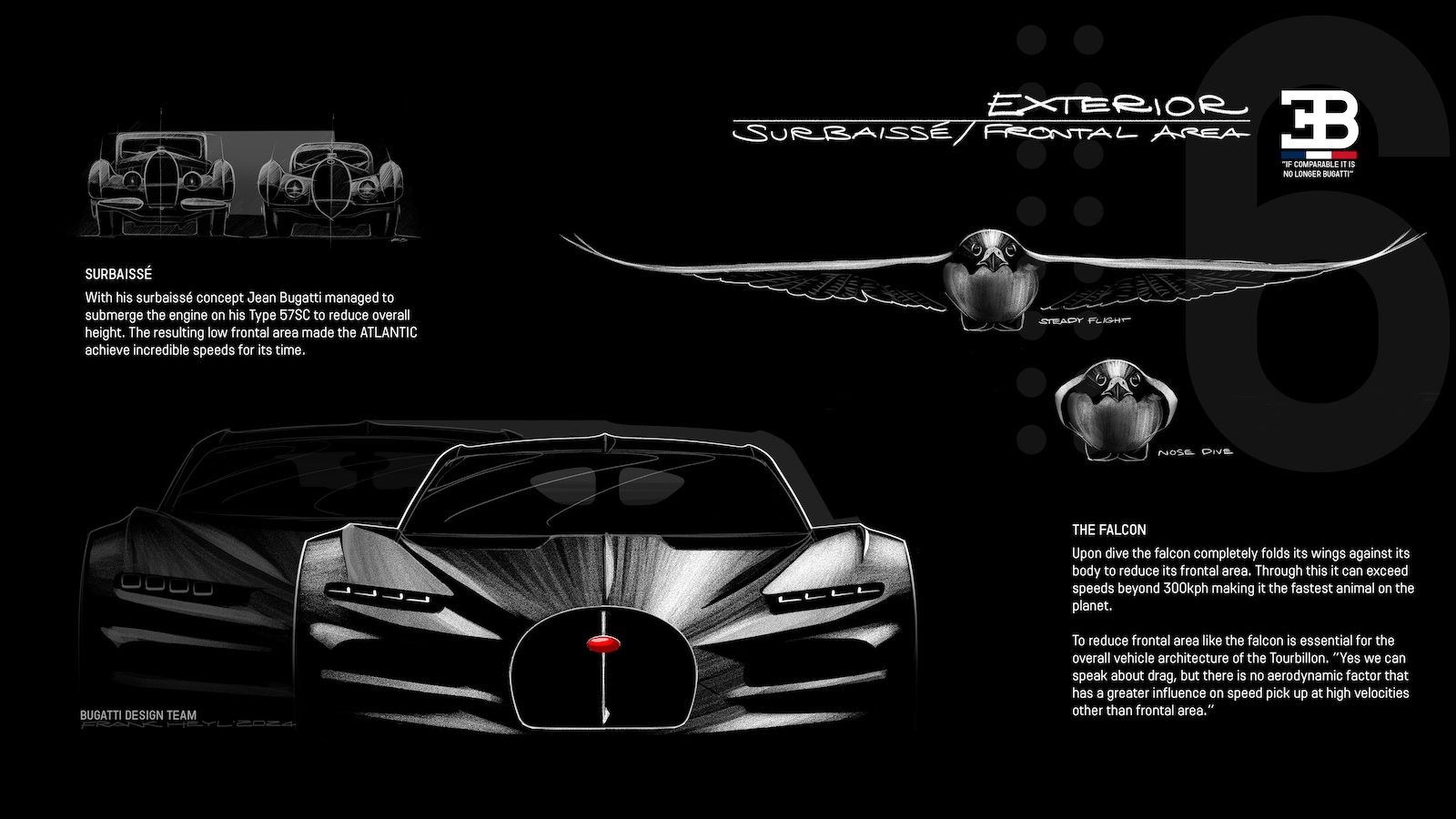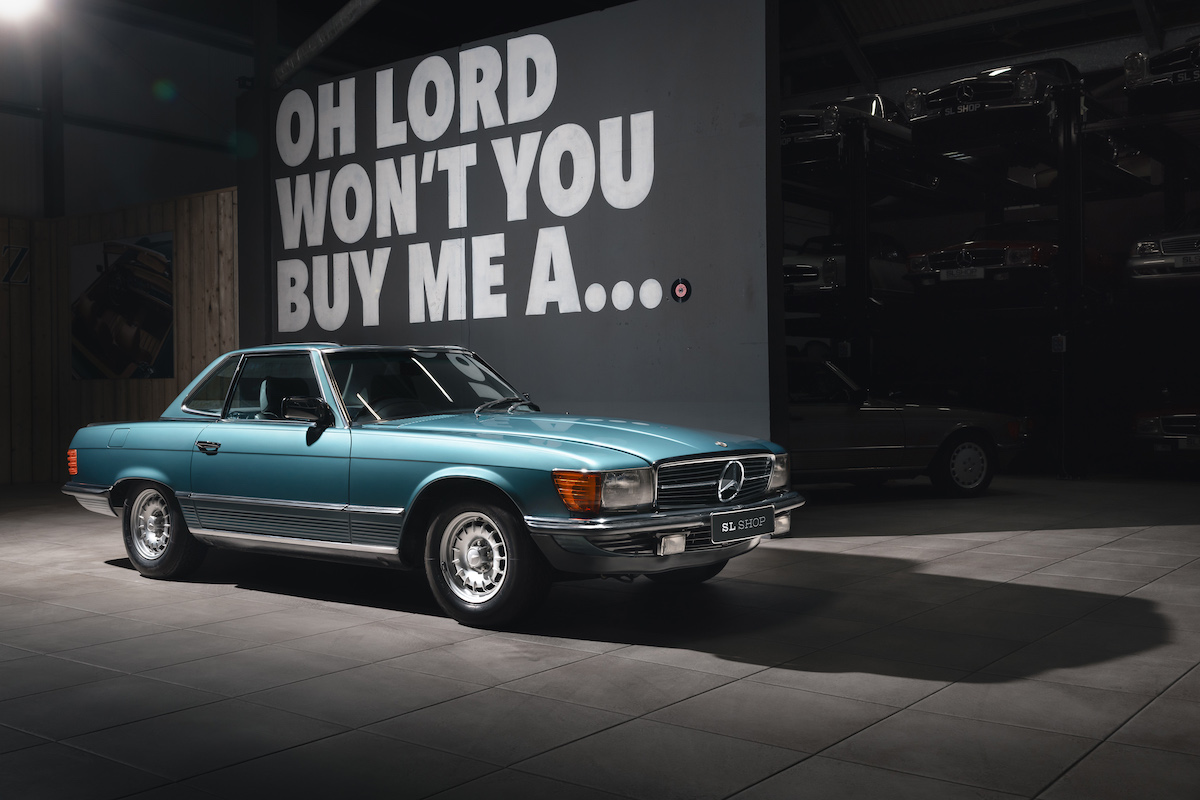The E36 BMW M3 may have looked like an ordinary 3 Series thanks to its deliberately restrained styling, but under the skin it was a different beast altogether, with its beautifully-balanced chassis and syrup-smooth S50 3.0-litre, 24-valve, inline six-cylinder powerplant.
During the Great War, the British Navy launched a top-secret program to counter Germany’s devastating U-boats. Hidden armaments were cleverly adapted into ordinary, vulnerable-looking merchant vessels, which would lure the prowling submarines and then attack them. Headquartered in Queenstown, Northern Ireland, they were dubbed ‘Q-ships’.
The term ‘Q-ship’ would get a huge airing again about 75 years later. This time it was the Germans’ turn. And it wasn’t a ship, but a BMW 3-series coupe packing almost supercar-sized artillery.
With the first M3, the four-cylinder E30 of 1986, BMW clearly had a winner on its hands. But it was a homologation special, with overt aero changes needed for racing. There was a feeling within BMW M GmbH that – M1 notwithstanding – the brand’s road cars should retain the element of surprise.
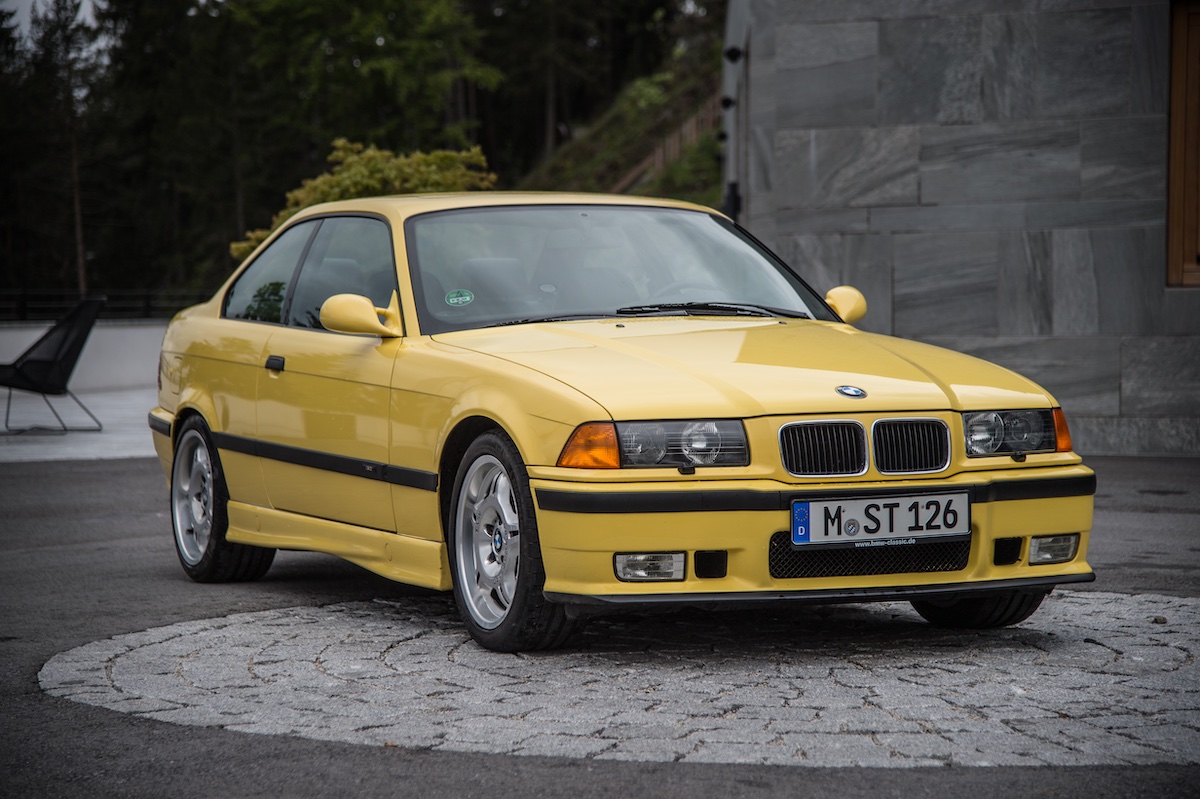
The E36 M3 launched at the 1992 Paris Motor Show, around 18 months after the cooking versions. It was certainly restrained, with 17-inch wheels, lower ride height, deeper front air dam with oil cooler, side skirts and aero exterior mirrors. A sedan and convertible followed in 1994.
Under the skin it was a different deal. The 3.0-litre, 24-valve, six-cylinder S50 powerhouse sailed straight into Ferrari and Porsche territory, despite the BMW’s skinny $125,000 price tag in Oz. With new VANOS variable timing (on intake) and a steel billet crank, it redlined at 7200rpm.
Drivetrain durability was enhanced by bits from the 850Ci V12, but the S50 engine demanded a diligent run-in procedure, while electronics imposed a lower rev limit when cold.
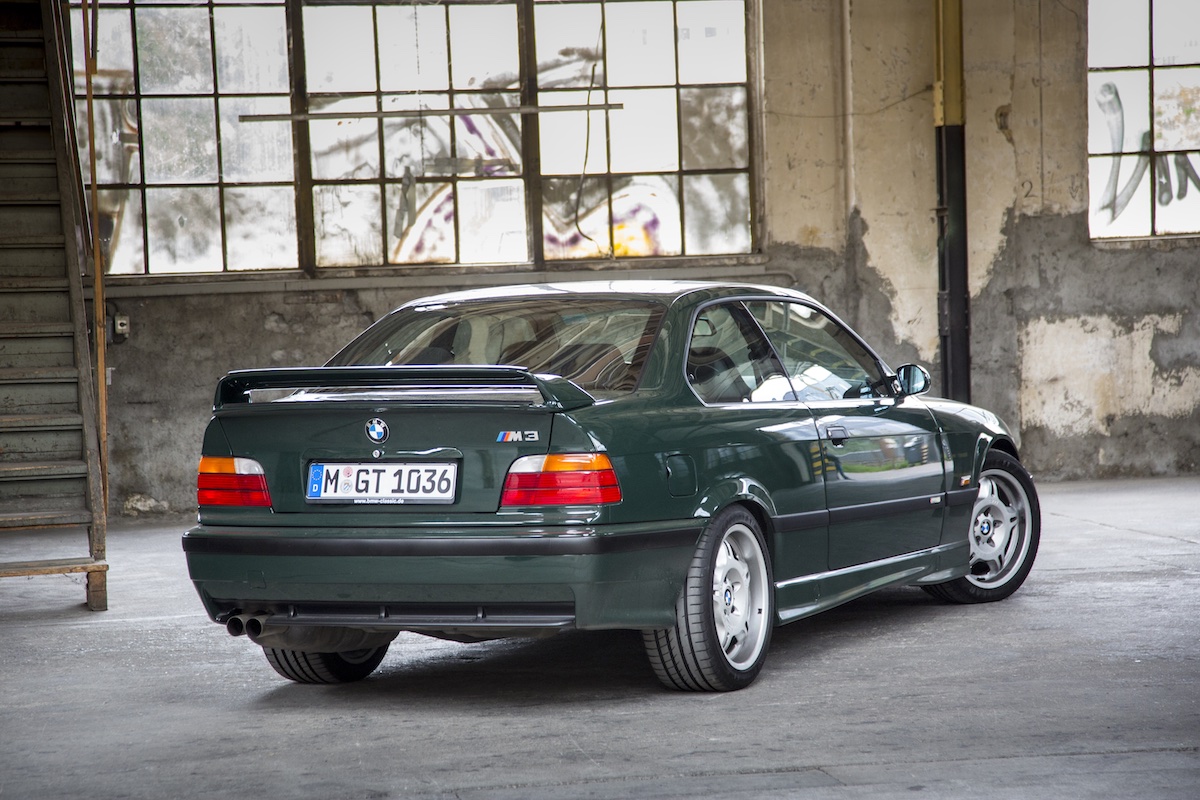
The syrupy S50 engine boasted outputs of 210kW at 7000rpm and 320Nm at 3600rpm, making it more potent than Porsche’s contemporary 3.6-litre 911 (964), while being as docile as any BMW six. With the stock five-speed manual, 0-100km/h was done in sub-six seconds.
Chassis-wise, the M3 carried over the E36 MacPherson strut front and multi-link Z-axle rear, but with firmer springs and dampers, 30mm lower ride height and an M-specific steering rack and speed-sensing power assist. Braking was by 315mm front (floating) and 312mm rear ventilated discs, behind 17-inch Motorsport alloys with 235/40 rubber. Kerb weight was around 1440kg.
BMW’s M-men splurged a little inside the M3, with a sporty-looking M instrument panel, excellent sports seats and M tri-colour details on the door sill plates and gear knob. M GmbH developed its own airbag steering wheel from 1993.

What impressed most about the M3, though, was the perfect balance of tractability, performance, handling and practicality. Here was one of the best-handling chassis in history, yet it accommodated four with luggage and was capable of fuel frugality to rival a stock 325i. It was as easy to drive daily and live with as any other 3-series.
So much for Honda’s still-new NSX, costing 50 per cent more, being the “everyday supercar”.
A 3.2-litre facelift arrived in 1995, its double-VANOS contributing to outputs of 236kW/350Nm that made this the first atmo production engine to break 100bhp (75kW) per litre. The manual gained a sixth ratio, and a clunky, single-clutch SMG sequential manual joined the range in ’97.

The 3.0-litre M3 was built from September 1992 to January 1996, a total of just over 29,000 being produced – all but about 3200 of those being coupes. The 3.2 ran until August 1999, totalling roughly 21,000 coupes and about 10,000 each of sedans and soft-tops.
The rarest ‘production’ E36 M3 was the M3R, a run of 15 homologation hot rods built in 1994 by Frank Gardner and BMW Motorsport for Australia’s booming GT-P production racing category.
When E36 M3 production ceased, the weird M Roadster and M Coupe stepped in to bide the time until the E46 M3 was developed.
At the October 2000 launch of the latter, the M division admitted that the E36’s downplayed styling had been a marketing mis-step, enabling a flourishing aftermarket of body-kitted, bogus M3s that hurt the brand’s image. Thus, the E46 M3 got unique bonnet and boot lids and front and rear quarter panels, to foil the fakers.
